Frescoes
High up where the last spruces of the "Hauenstein"-forest stand, a rock cave, the so-called Klausnerloch, next to which a clear source bubbles, opens in almost inaccessible place to the curt Sciliar.
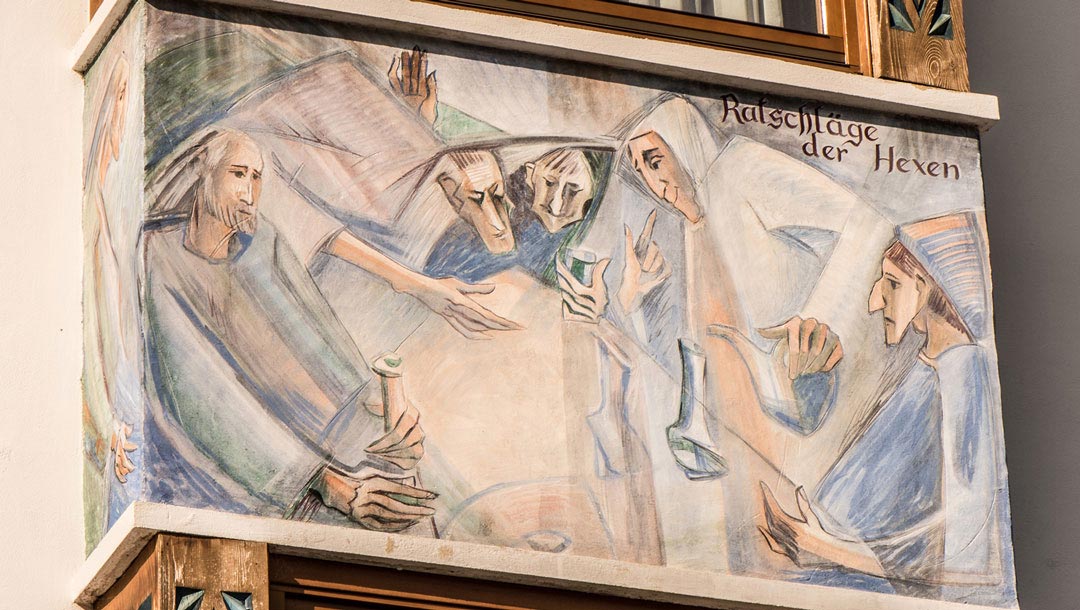
At the moment emperor Max,
the last knight, owned the German crown
...one summer evening, a pilgrim went up to "Hauenstein" castle, tapped to the gate and asked for the lord.
In a long secret discussion the stranger entrusted himself to the lord of the castle. He then put his weapon dress and his baldric with precious stones down in the castle chapel. The next morning, accompanied by his guest, he went upward to that rock cave at which work people of the "Hauensteiners" people built a hermitage for him. In this unworldly solitude, the mysterious stranger lived from now on His name and descent weren’t known apart from the "Hauensteiner".
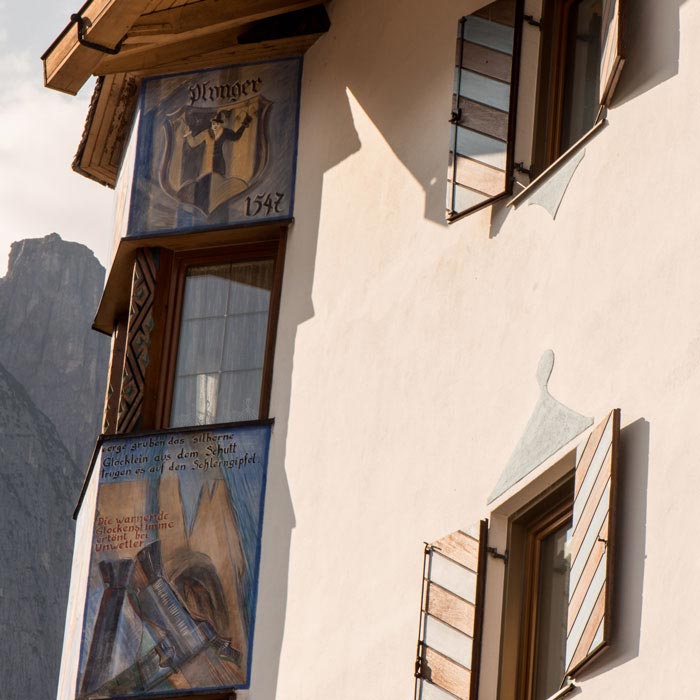
Soon, well
... the hermit was friend with the Schlern witches, who lived in the near rock ravines, understood the language of the animals and knew how to use the secret strengths of nature such as plants, herbs and mosses to the benefit of ill people. When the plague fell to the country, the hermit came out from the hermitage, got off to the valley and scared away the black death from many sickbeds.
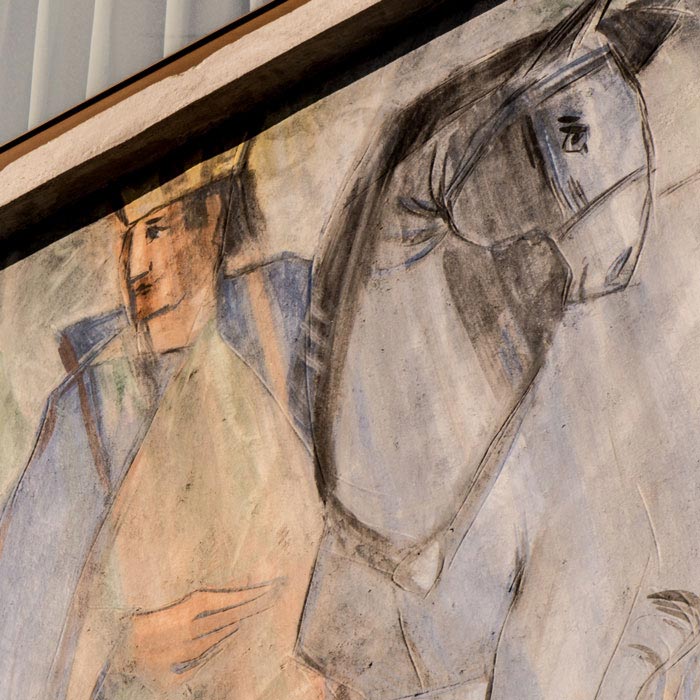
Emperor Max,
...who was in Innsbruck Hof, had heard of the hermit at the Sciliar and paid him a visit. When the prince saw the hermit he recognized one of the great people of his empire. He waved the retinue to stay behind and entered the poor hermitage for a dialogue lasting several hours. Before the farewell the emperor asked the hermit insistently to return to the world anyway. He, the emperor, needed the wise advice of his friend more urgently than ever in these bad times. But the hermit could not be moved to leave his solitude.
With tears in his eyes
...Max went away and did not reveal the secret of the hermit of the Sciliar to anybody. Years passed; the "Klausner" was old when the witches brought him the news that emperor Max had done his last breath in a distant town in 1519. The hermit of the Sciliar mourned and commemorated his friend and followed him in death after few days. Unfortunately, hermitage and band remained left; only the evening wind played with the little bell in the turret and carried the high tones to the country.
When after many years the hermitage was destroyed and burnt by many soldiers, the witches dug the little silver bell out from the rubble and carried it on top of the Sciliar, where the bell voice still resounds during bad thunderstorms.
Cultural sights in South Tyrol
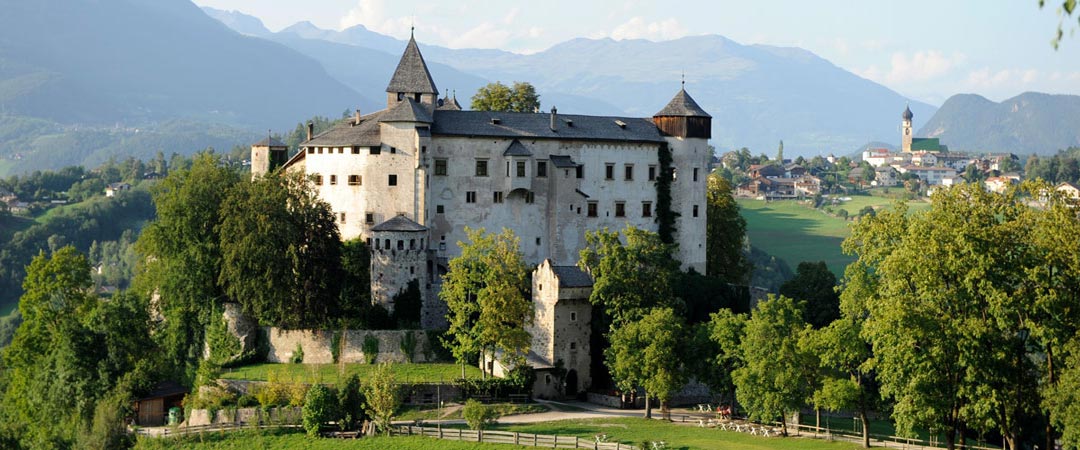
Castle of Presule
...was built around 1200 and extended to a Renaissance castle complex in the 16th century. In 1981, a group of interested people found the so-called "Kuratorium Schloss Prösels GmbH" cooperative. The castle was restored and “revived” in 1982. During the summer months the castle awaits you with guided visits and hosts numerous cultural events.
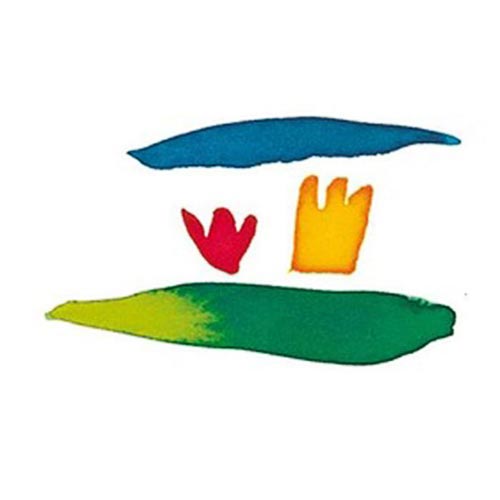
The Gardens of Trauttmansdorff Castle
...with an area of 12 ha are situated at the eastern outskirts of Merano. They are a tour through our planet’s flora. The Gardens fascinate thanks to their extraordinary variety and the harmonious ensemble: You can admire more than 80 colourful garden landscapes from all around the world.

The Messner Mountain Museum
...was opened by Reinhold Messner, one of South Tyrol’s most famous mountaineers. He dedicated his museum project with six extraordinary locations in the fascinating landscape of South Tyrol to the mountains and their culture. The museums are MMM Corones, MMM Firmian, MMM Ortles, MMM Juval, MMM Dolomites and MMM Ripa.
Ötzi, the Iceman
In 1991, people from all over the world eagerly followed the extrication of a man from the Copper Age who had lain in a glacier of the Ötztal Alps for 5,300 years without taking any damage. Called "Ötzi" by the media, this find constantly keeps us in suspense with new insights into his life and death. You can visit Ötzi, the Iceman in South Tyrol.
The founders of the so-called Rittner Sommerspiele established an open-air stage in the impressive inner courtyard of the Kommende Lengmoos, a nearly thousand years old enclave of the German Order. Each summer, there is a highlight at the Kommende in harmony with the founding idea to bring good, genuine popular theatre of renowned authors to the stage in Renon.
Castel Trostburg near Ponte Gardena dates back to the 12th century.The castle has been publicly accessible since 1977 and offers guided visits through the castle’s treasures.
The more than 600-year-old "Plattner Hof" in Soprabolzano is among the most picturesque farms in South Tyrol. Today, it’s a bee museum with guided visits during the summer months.
